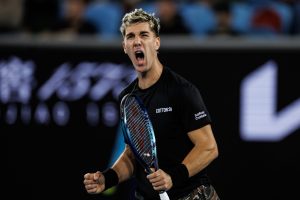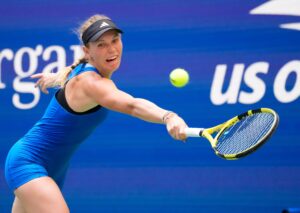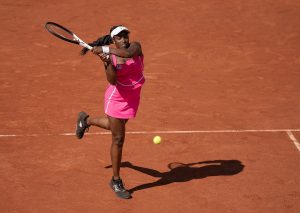Just like the athletes competing in the major tennis tournaments, the actual events are constantly improving. It’s easy to measure an athlete’s gains in terms of wins and losses. It is tempting to measure the success of the tournament in terms of attendance and viewers.
Although the actual venue the Billie Jean King Tennis Center has been undergoing extensive renovations over the past few years, the question as to whether the actual US Open experience is improved is open to debate.
The most prominent renovation is the addition of the roof over Arthur Ashe Stadium. In the case of rain, it is possible to complete the showcase matches. In the early rounds of the tournament, on a rainout day, which occurred this year, the roof does little to manage all the cancelled matches. That day of rain caused the cancellation/postponement of over 40 matches. What the roof does do is alleviate the problem of reissuing tickets for 23,000 plus spectators.
Unfortunately, the roof has created some new problems. On a nice sunny day when the roof is wide open and should not be involved in play, it casts a huge shadow over the match. And it is this shadow that creates a problem for both players and spectators. As the sun moves throughout the day, so does the shadow.
There is a period during the day when one end of the court is in shadow and the other end is in bright sunlight. Players are faced with the challenge of tracking the ball either coming from the sunshine into the shade or from the shade into the sunshine. As the day progresses the shadow moves, and then it covers half the court lengthwise, causing both players difficulties tracking the ball.
For TV viewers, it is very difficult to follow the ball as it moves from the sun into the shade. It is even difficult to see the player who is on the shady end of the court.
And then there is the noise issue. Any stadium with almost 24,000 people inside will be noisy. The closed roof, however, seems to amplify the indoor noise. The sounds of dishes and cutlery clinking in the private boxes echo through the air. The conversations between fans becomes a background hum.
Players have difficulty hearing the ball as it comes off their opponents’ racquet. The sound of the ball off the racquet is used by players to judge the speed and spin of the ball and is a critical component of timing their strokes.
For TV viewers, the noise is also an issue. Although viewers do have the option to turn the volume of the sound down–or even off–most viewers like hearing the sound of the ball off the racquet. Turning the sound down also turns the commentary feed down. In order to hear the commentary and the ball, the background buzz becomes a major annoyance.
The presence of the roof has also negated the effect of the wind. In previous years on a breezy day, the wind would swirl at court level, providing a challenge for both players. Now the outdoor court plays more like an indoor venue.
The scheduling of matches is another issue. Typically, in Arthur Ashe Stadium there are three matches in the day session followed by two matches in the night session. But things can get messy if matches run long. Saturday provided a glaring example. With both women’s matches going a full three sets, the men’s match of the day session did not take to the court until after 5pm.
The match, featuring Rafael Nadal, went four sets and was not completed until after 830pm.
At the end of the day session, the 23,000 plus seat stadium must be emptied and cleaned before the night session ticket holders can be admitted. The whole process is slowed down considerably as the exiting fans try to make their way out they run into a roadblock of evening ticket holders who have been admitted into the grounds and are congregated in the courtyard at the stadium entrance. So, during prime television viewing time, there was no live match on Arthur Ashe court.
The evening/night session featuring Roger Federer began around 9:30pm. Fortunately, it was a routine three set win for Federer. And so the final match of Madison Keys versus Elana Vesnina took to the court after 11pm. The three set match was completed at 1:45am.
This scenario is unfair to both the players and the fans. The uncertainty of match start time is always present, especially at Major tournaments where a match in the men’s draw could be completed in three quick sets or five long drawn-out sets.
Players learn to manage their rest and nutrition so that they are able to compete no matter how long the delay. But asking an athlete to start a match at 11pm is totally unacceptable. Even if they don’t arrive on site until noon to have a warm up hit, it is a very long day. After the match, there are media obligations and then the trip back to the hotel in Manhattan, dinner, and possible post match physio or massage. Sleep is probably difficult to achieve with the match adrenaline still in their system.
For fans, the late night matches are also an issue. Ticket holders are admitted on site at 6pm. There are some fast food outlets and bars, but there is not enough space for the 20,000 plus fans. So the thousands of evening ticket holders end up standing around the big fountains in the courtyard squished tightly against each other, trying to watch the end of the day session on the big screen. On that day with extended matches, those fans would have waited like that for up to two and a half hours. No other sporting event has a similar situation. Parents who brought young children to the matches would not have been in their seats before 9pm, so they may not have been able to watch one complete match before it was time to take the kids home.
Tv viewers, while comfortable at home, were also unhappy with the delayed evening session. Many fans were unable to stay up until 2am to watch a match that should have started no later than 10pm. Televising a tennis match from the country’s Major tournament in the middle of the night does not help grow the game, something the USTA is trying to do with its “net generation” campaign.
The old Grandstand court has been replaced by a new modern stadium. The cherished seats in the shade at the old court are now just a memory. The new Armstrong Stadium, also with a roof, will be ready for next year’s tournament. As the improvements and renovations are completed the kinks will need to be worked out so the tournament will continue to draw the fans.
Main Photo:
Embed from Getty Images






